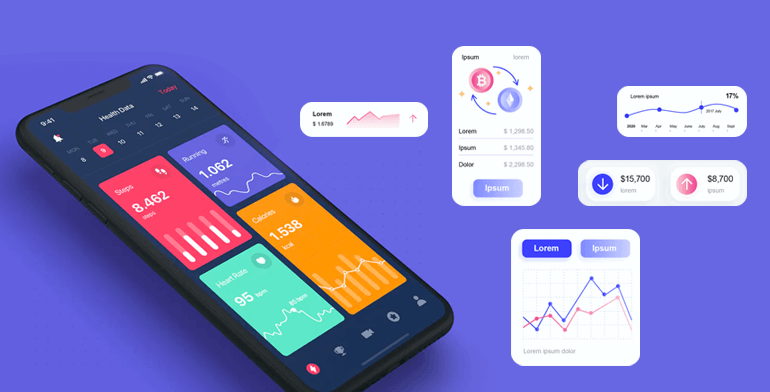Marketing campaigns have historically depended on speculation and gut feeling. Nevertheless, this strategy frequently resulted in missed opportunities and resource waste. Business owners may now examine enormous volumes of data and derive meaningful insights thanks to the development of big data and advanced analytics tools. By using this data to predict future trends and outcomes, predictive analytics helps business managers make well-informed decisions and maximize the effectiveness of their campaigns.
The marketing sector is changing due to predictive analytics, which provides a more individualized and data-driven strategy. Business owners may better understand their target audience, spot important patterns, and adjust their campaigns by utilizing the power of predictive models and algorithms.
This article examines the advantages that predictive analytics offers to businesses and how it is transforming marketing strategies. This article provides business owners and interested parties with insightful explanations and real-world examples of how predictive analytics contributes to marketing success.
According to this source, the market for predictive analytics software was valued at 5.29 billion U.S. dollars in 2020 and is forecasted to grow to 41.52 billion U.S. dollars by 2028. Predictive analytics are often used to analyze consumer behavior and manage supply chains and business operations. And according to this source, 91% of top marketers are either fully committed to or already implementing predictive marketing.
In today’s digital age, marketing campaigns have become more data-driven. Companies are shifting their focus towards predictive analytics to gain insights that can revolutionize their marketing strategies and boost their overall success. Predictive analytics involves using statistical algorithms, machine learning techniques, and data to accurately forecast future outcomes. Companies can now customize marketing efforts based on customer behavior and preferences.
So, how exactly is predictive analytics transforming marketing campaigns? Let’s delve deeper into this game-changing technique.
Customer Segmentation
One of the key benefits of predictive analytics in marketing is the ability to divide customers into distinct segments based on their behavior, demographics, and purchasing patterns. You can increase your marketing campaign’s effectiveness by understanding your customer segments, resulting in higher conversion rates and satisfaction.
Predicting Customer Lifetime Value
Predictive analytics helps marketers evaluate the potential lifetime value of customers by analyzing their behavior and purchase history. This enables companies to identify their most valuable customers and focus their resources on retaining and nurturing these relationships. By predicting customer lifetime value, companies can allocate their marketing budgets more effectively and optimize their strategies for maximum ROI.
Optimizing Pricing and Promotions
Predictive analytics offers insights into price elasticity and allows companies to determine the optimal price point for their products or services. By analyzing past purchasing behavior and market trends, companies can identify the price points that maximize sales and profits. Additionally, predictive analytics can help identify the most effective promotional offers and discounts, allowing marketers to tailor their campaigns to specific customer segments.
Personalised Marketing
Customers today expect personalized experiences and relevant recommendations. Predictive analytics enables marketers to deliver on these expectations by analyzing large volumes of customer data and generating accurate predictions about each customer’s preferences. This allows businesses to create personalized marketing messages, offers, and content that resonate with individual customers, increasing engagement and driving conversions.
Churn Prediction
Predictive analytics can help businesses anticipate and prevent customer churn. Companies can identify early warning signs of potential churn by analyzing historical data, such as customer interactions, purchase patterns, and social media sentiments. This allows them to implement targeted retention strategies, such as personalized offers or proactive customer service, to retain valuable customers and reduce churn rates.
Enhanced Marketing ROI
By leveraging predictive analytics, marketers can optimize their campaigns for maximum return on investment (ROI). The ability to accurately predict customer behavior and preferences ensures that marketing resources are allocated to the right channels, messages, and customer segments, resulting in higher conversions and increased revenue.
Predictive Analytic Solutions
Predictive analytics is revolutionizing marketing campaigns and transforming how marketing teams reach potential customers. Using predictive analytics tools, business owners can gather real-time data on consumer behavior and predict future behavior to deliver personalized experiences. This data-driven approach allows business owners to optimize their marketing spend by focusing on the most effective channels and targeting specific customer segments.
With predictive insights, business owners can understand customer journeys and tailor their marketing activities accordingly. They can determine the best time of day to engage with customers, whether it’s through social media platforms or email campaigns. By using statistical techniques and neural networks, predictive analytics can analyze a wide range of data sources, including streaming services and social media, to identify future trends and improve marketing performance.
Read Also: Understanding Customer Journey Mapping in Digital Analytics
A predictive analytics solution gives business owners actionable information to optimize their advertising campaigns. They can make informed marketing actions based on data-driven insights, resulting in better marketing outcomes. By leveraging predictive technologies, business owners can enhance the user experience and increase customer loyalty through personalized content recommendations.
In addition, a predictive analytics platform simplifies the process of analysing user behavior and provides real-time data to business owners. This enables them to make data-driven decisions and quickly adapt their marketing strategies. By understanding how customers interact with different advertising channels, business owners can allocate their resources more effectively and maximize their ROI.
Moreover, predictive analytics algorithms enable business owners to identify customer segments with high potential for conversion. This allows them to target their marketing efforts towards these segments, ensuring their messages resonate with the right audience. By leveraging predictive analytics, business owners can create customized advertising campaigns that are relevant and engaging to their target audience.
Predictive analytics is a game-changer for data-driven marketing. It empowers marketing teams to make informed decisions based on customer behavior and preferences, ultimately improving the overall customer experience. Business owners can optimize their marketing campaigns by implementing predictive marketing strategies, maximizing their marketing performance, and driving business growth.
How Can Predictive Analytics be Used in Marketing?
By offering insights into future events that are likely to occur, predictive analytics assists marketers in making better decisions now. However, a trend is not always the result of a single event, and with the exponential growth of data being generated from many devices and channels, it can be challenging to identify patterns in data. With the use of predictive analytics, marketers may more effectively plan and make decisions by identifying significant patterns in their data.
Predicting the future with 100% accuracy remains out of reach no matter how much data you’ve collected and analyzed. But marketers can forecast probable outcomes with a high degree of precision using predictive analytics methods. With predictive data modeling, data gathered from in-house and third-party data sources is analyzed to uncover patterns, outliers, and other key indicators to identify likely outcomes in various scenarios.
With these insights, marketing teams optimize their campaigns to meet behavior, event-based, or revenue goals. Artificial intelligence, machine learning, and historical data combine to create the kinds of data-driven insights marketers need to attract, retain, and nurture customers.
Big data is the fuel powering modern marketing. Predictive analytics plays an important role in converting this data into actionable insights that improve the quality of segmentation, targeting, and promotion efforts. Here are a few ways marketers are using predictive analytics to improve their effectiveness.
Accurately predict consumer trends
Consumer preferences are in a constant state of flux. Predictive analytics analyzes data from many sources, including contextual data such as weather and location, consumer sentiment, and online content like web pages and social media posts. Spotting an emerging trend quickly gives marketers a distinct advantage.
Refine customer segmentation
Machine learning can help marketers improve the quality of their clustering decisions by spotting subtle relationships between data from individual customers. With this information, marketers can slice and dice customer segmentation in different ways to improve targeting and, ultimately, deliver personalized campaigns to customers and prospects.
Create highly customized campaigns
Delivering the right message to the right customer at the right time requires customization. Predictive analytics helps marketers better understand the behavior of individuals and more accurately predict which messages are most likely to resonate with which customers, which platforms are best for effectively reaching customers, and when to launch campaigns or send offers.
Reduce customer churn
Attracting new customers is more expensive than retaining existing ones. Predictive analytics can spot trends in customer disengagement, providing marketers with an opportunity to shore up areas of weakness such as a subpar customer service experience or a poorly performing product line. By analyzing patterns in data, these tools can also identify those customers most likely to disengage and ultimately churn. Once identified, these high-risk customers can be placed into a re-engagement program that provides personalized experiences designed to reduce attrition.
Prepare for a post-cookie future
As the clock winds down on third-party cookies, predictive analytics, and other related technologies, such as artificial intelligence (AI), will play an increasingly important role in personalizing marketing efforts. In-depth analysis of both first- and third-party data sets will become even more crucial to gaining predictive insights on customer behavior, customer lifetime value, and more.
Predictive analytics is being used to resolve some of the marketing industry’s most pressing challenges. Here are just a few.
Improving marketing resource allocation
Predictive analytics tools enable marketing teams to use their resources more efficiently while increasing ROI. By accurately predicting customer behavior and segmenting for personalization, marketers can create highly effective marketing campaigns targeted only to those most likely to take the desired action—and avoid marketing spend on those unlikely to convert. Missteps are difficult and costly to correct mid-campaign, so getting all the elements of a campaign dialed in at the outset allows marketing teams to avoid wasting resources.
Recommendation engines
Recommendation engines are designed to maximize the value of each customer and are used at various stages in the buying journey to suggest products highly likely to appeal to the individual. This strategy can increase the average value of an order significantly. Effective recommendations are based on a shopper’s purchase history data, lifestyle data, and other information to recommend only those products that closely align with their interests. Predictive analytics is used to combine relevant data and identify products that meet the criteria at hand.
Retaining customers
Providing a seamless, engaging omnichannel experience is essential to retaining existing customers. Today consumers interact with brands across multiple touchpoints including mobile apps, e-commerce websites, social media, and in-store visits. Predictive analytics connects the data generated from each customer interaction, helping marketers provide valuable promotions and special offers to their customers across the entire ecosystem.
Organizations that incorporate predictive analytics into their daily operations in this way improve their business processes, enhancing decision making and gaining the ability to direct, optimize, and automate decisions, on demand, to meet defined business goals.
A vast majority of executives who have been overseeing predictive marketing efforts for at least two years (86%) report increased return on investment (ROI) as a result of their predictive marketing. Only 5% say they’ve not experienced an improvement in ROI or a decline in ROI from their efforts at predictive analytics.
Here are the steps you can take to increase your marketing ROI:
- Set ROI goals
- Make an ROI tracking plan
- Focus on high-performing channels
- Analyze and optimize
- Focus on metrics that matter
- Use marketing automation technology
- Run experiments frequently


